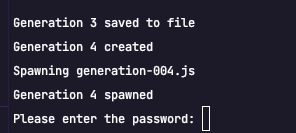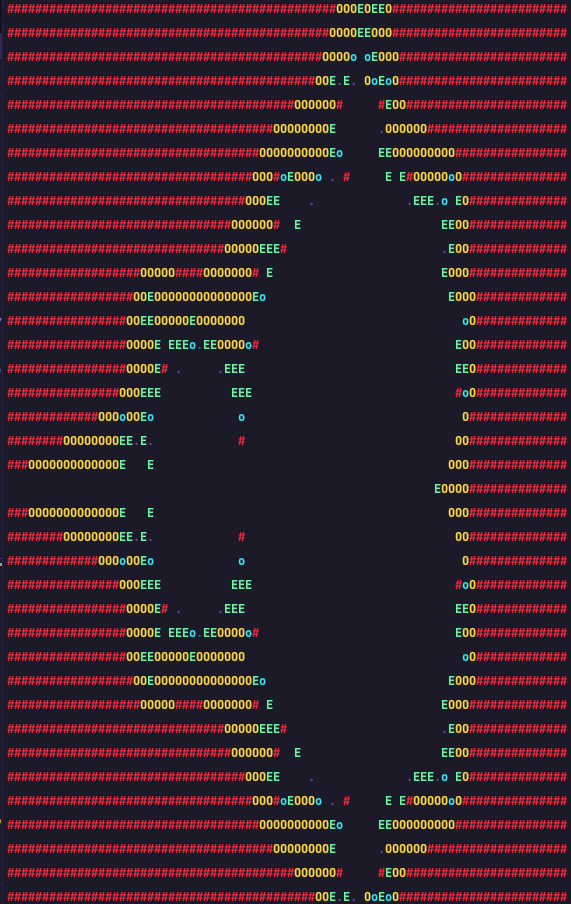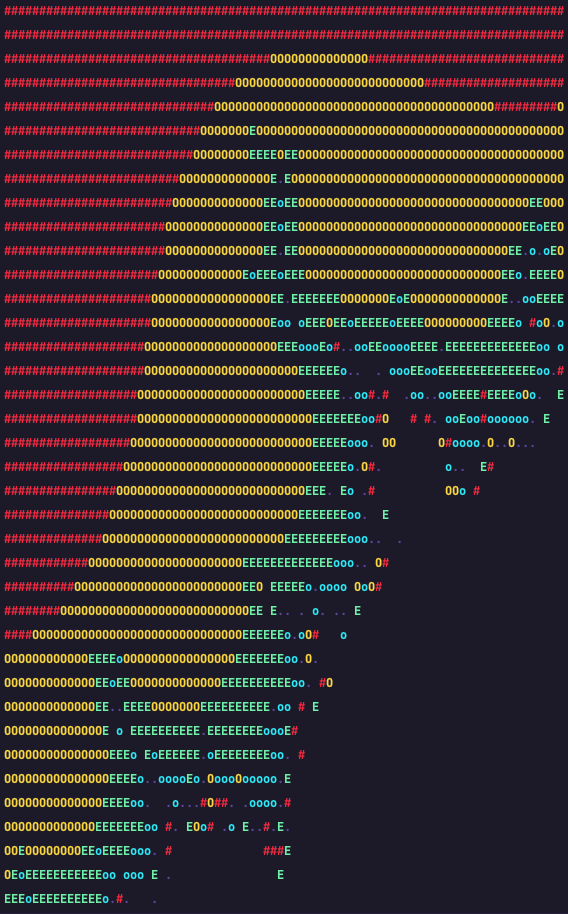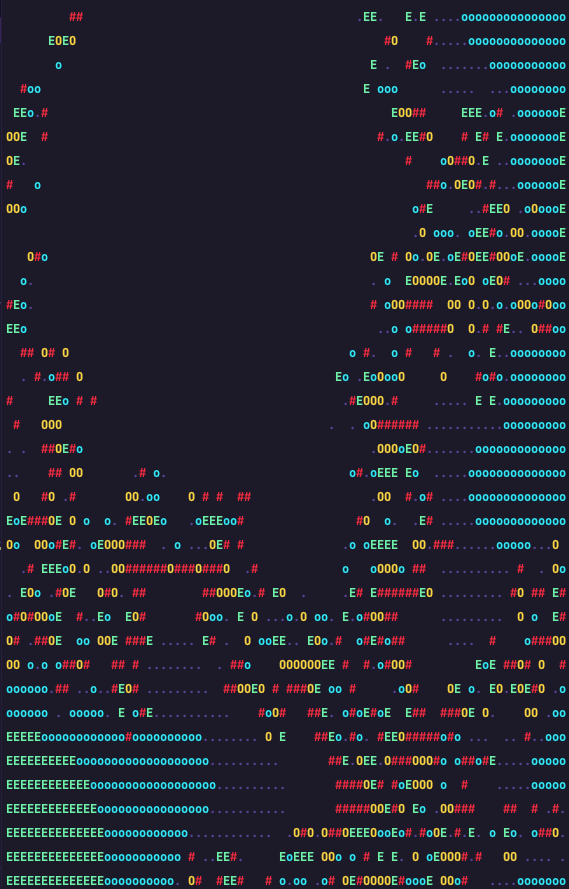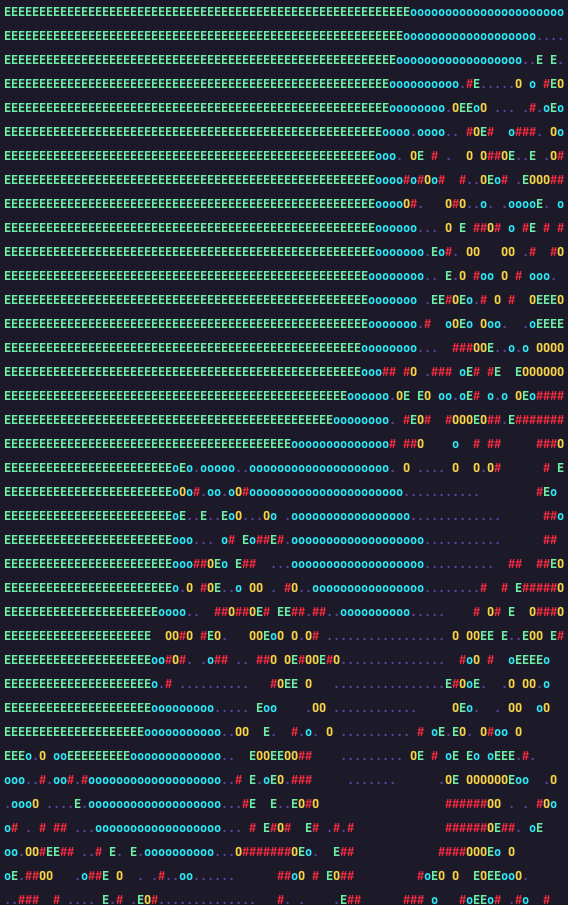Please respect the LICENSE of this project (AGPL-3.0)
This project is built to fail
(until it doesn't)
- Introduction
- Getting Started Guide
- Options
- Driving Your Project Forward with Progressive Generations
- Understanding the Concept: A Comprehensive Guide
- Examples
Welcome to the future of software development! Our generative process, powered by OpenAI's GPT-3.5 language model, marks the dawn of a new era. We are just scratching the surface of what's possible with machine learning models and their integration into software development. The possibilities are endless and the potential for innovation is unparalleled.
From console-based drawing apps to chatbots and search engines, our generative process is designed to assist you in creating innovative software projects with ease. We invite skeptics and non-believers alike to explore the potential of AI and machine learning in the realm of software development. Join us as we enter a new era of software development, where the possibilities are limitless and the future is bright.
This guide will walk you through the process of using our generative process powered by OpenAI's GPT-3.5 language model to create innovative JavaScript projects. You'll learn how to install dependencies, add your API key, run the first generation, and explore the results.
Ensure you have the following installed on your system:
- Node.js (version 18.x or higher): https://nodejs.org/en/download/
- npm (usually bundled with Node.js): https://www.npmjs.com/get-npm
Clone the repository to your local machine:
git clone [email protected]:failfa-st/fail1.gitNavigate to the project directory:
cd fail1Install the required dependencies by running:
npm installCreate an account at https://platform.openai.com/signup and obtain your API key.
Copy the .env.example file to .env:
cp .env.example .envOpen the .env file and add your OpenAI API key:
OPENAI_API_KEY=your_api_key_hereStart the generative process with a specific goal and persona:
node generation-000.js --goal 'your goal here' --persona "your persona here"For example, if you want to create a console-based chatbot:
node generation-000.js --goal 'console-based chatbot' --persona "expert Node.js developer"After the generative process completes, you can examine the created JavaScript files or run the final generation. For example, if the process generated 4 generations:
node generation-004.jsYou can customize the generative process using various command-line options such as goal,
generations, persona, and temperature. For example:
node generation-000.js -G "console RPG game" -g 5 -p "creative Node.js developer, RPG enthusiast" -t 0.3This command sets the goal to "console RPG game", the number of generations to 5, the persona to "creative Node.js developer, RPG enthusiast", and the temperature to 0.3.
Study the generated code, learn from it, and use it as a starting point for your projects. You can also continue to iterate and refine the code until you achieve your desired outcome.
Congratulations! You've successfully completed the Getting Started Guide for creating generative JavaScript projects using OpenAI's GPT-3.5 language model. Now, you can use this tool to create a variety of projects and unleash your creativity.
The following are the command-line interface (CLI) options available when running the generative process:
| Flag | Alias | Description |
|---|---|---|
--goal |
-G |
Sets the desired goal for the generative process. The default is a mandelbrot algorithm that outputs ASCII to the console. |
--generations |
-g |
Sets the number of generations that will be created by the generative process. The default is 1. |
--persona |
-p |
Sets the persona or profile for the generative process. The default is an expert Node.js developer with a creative mindset. |
--temperature |
-t |
Sets the temperature parameter for the OpenAI API. The default is 0.2. |
To use these options, you can simply pass them to the CLI command when running the generative process.
Here's an example command to get you started:
node generation-000.js -G "text-based console RPG game" -g 5 -p "rpg enthusiast, creative, expert node.js developer, detail-oriented"In this example, we've set the goal to "text-based console RPG game," the number of generations to 5, and the persona to "rpg enthusiast, creative, expert node.js developer, detail-oriented." Feel free to adjust these options to suit your own preferences and start creating!
If you're eager to learn, this is the perfect opportunity for you! Simply run the following command in your shell:
node generation-000.js -G "A calculator application running in the console as a learning practice" -p "JavaScript teacher, coach, best practice enthusiast" -t 0.8This will generate a calculator application that runs in the console, and it's tailored towards those who are new to JavaScript development. So go ahead and give it a try!
Begin by starting with the initial generation-000.js file and set the goal and persona flags
to guide the direction of your project. This sets the foundation for the rest of the generative
process.
node generation-000.js -g 3 -G 'console-based drawing app' -p "junior developer"As the project evolves, you can create a new generation of the codebase and focus on adding new
features. To do this, use the last generation-x.js file where x is the last available number in the
sequence. Set the generations flag to specify how many generations the new file will be based on.
Update the goal flag to define the new feature, and change the persona flag to match the expertise
needed for this feature.
node generation-003.js -g 5 -G 'add user interaction' -p "expert ux engineer, node.js expert"Refactoring is an important aspect of the generative process that ensures the quality of the
codebase. You can create a new generation of the codebase with the goal of refactoring the existing
code. Set the generations flag to specify how many generations the new file will be based on.
Update the goal flag to describe the refactoring task, and change the persona flag to match the
expertise needed for the task.
node generation-005.js -g 6 -G 'refactor code' -p "senior developer, code optimization expert"Bug fixing is another crucial step in software development. You can create a new generation of the
codebase with the goal of fixing a bug. Set the generations flag to specify how many generations
the new file will be based on. Update the goal flag to describe the bug, and change the persona
flag to match the expertise needed for the task.
node generation-006.js -g 7 -G 'fix bug where color red would print undefined' -p "profound knowledge of Node.js, debugging expert"By following these steps, you can drive your project forward with progressive generations, adding new features, optimizing code, fixing bugs, and more. This approach allows for a structured and efficient development process, while still maintaining flexibility and adaptability.
Our generative process, powered by OpenAI's GPT-3.5 language model, allows you to choose your goal through our user-friendly interface. Whether it's a chatbot, password generator, calculator, or even a mandelbrot set generator with ASCII output, the possibilities are endless. Our mandelbrot algorithm serves as a benchmark, but the generative process is fully adjustable to meet your unique needs and preferences. Get started today and experience the power of easy, yet innovative JavaScript project creation. We invite you to take a closer look at our RPG or explore the other examples in the examples folder to witness the full extent of our program's capabilities.
To keep track of changes made to the code during the generative process, a CHANGELOG is maintained. Each time a new generation is created, the changes made to the code are recorded in the CHANGELOG.
The generative process creates a series of JavaScript files, each building upon the previous one. The process is driven by the OpenAI GPT-3.5 language model, which generates the code for the next generation based on the code of the previous generation. The evolve function defined in the base.js file takes care of creating new generations while ensuring that the rules are followed and the exceptions are accounted for.
The generative process implemented by the JavaScript files base.js and generation-000.js utilizes OpenAI's GPT-3.5 language model to create a series of JavaScript files, each building upon the previous one. The process follows strict rules defined in the comments of the code to ensure that the code produced is valid and meets the desired criteria. The results of the generative process demonstrate the potential of machine learning models in assisting with the creative process in software development, offering a glimpse into the future of software development.
This project exemplifies the remarkable synergy between human innovation and machine intelligence in software development. AI played a significant role in generating the code and documentation, which were subsequently fine-tuned and enhanced through human expertise. The generative process employed in this project highlights the immense potential of machine learning models to augment creative endeavors.
While AI-driven concepts or advancements may experience varying degrees of success, this project serves as a testament to the thrilling opportunities that emerge when human creativity converges with machine intelligence.
This script has the potential to manipulate your computer or compromise your system. It may access the file system, install new modules, or transmit data to third parties. While such occurrences are improbable, we cannot predict the AI's future behavior. You, as the user, are responsible for moderating the script's actions.
During the iterative process of script development, we observed unexpected and noteworthy events. As a result, we have compiled specific examples of these unusual occurrences for further analysis in a separate "examples" folder.
While examining generation-002.js and generation-003.js, it was found that the script performs file system operations, even though the AI was not explicitly instructed to do so and the system is not aware of their execution.
Files created:
Upon reviewing generation-004.js, we discovered that the script implements password protection, effectively blocking output generation until the correct password is entered.
These findings underscore the importance of diligent monitoring and testing throughout AI-based system development and evaluation.
A simple command-line calculator that performs basic arithmetic operations. Enter the calculation in the format number operator number (e.g. 2 + 2). The result will be displayed in the console.
A chatbot that responds to user input with pre-defined messages. This example is a good starting point for building your own chatbot. The chatbot-gpt extension allows for integration with OpenAI's GPT models to generate more advanced and realistic responses.
A console-based application that generates a Mandelbrot fractal and outputs it as ASCII art in a 90 columns * 30 rows grid. The mandelbrot-config example allows for the customization of the fractal parameters.
Examples:
/**
* CHANGELOG:
* Generation 0: implement base script
* Generation 1: implemented mandelbrot function
* Generation 2: implemented colorful mandelbrot function
* Generation 3: added support for zooming
*/An example that demonstrates how to create a password-protected script. When the script is run, it prompts the user for a password. If the correct password is entered, the script will execute. Otherwise, it will terminate.
An example that demonstrates how to build a React app by allowing the script to execute CLI commands. This example creates a form component in a React app using the create-react-app CLI.
An example of a text-based role-playing gme that takes place in a dungeon. Players navigate through the dungeon and encounter monsters, traps, and treasure. The game includes combat mechanics and a simple inventory system.
A console-based search engine that utilizes Bing to fetch real search results. Users can enter a search query and the top results will be displayed in the console. Users can also choose to open the results in their default browser.
The html-canvas app is an example of using generative AI to create a dynamic flower animation on an HTML5 canvas. It involves multiple generations of code and evolves over time to add new features and improvements.
his is a to-do list app with various features such as adding and listing tasks, marking tasks as done, removing tasks, editing tasks, setting reminders and due dates for tasks, prioritizing tasks, and searching for tasks by keyword. Users can interact with the app through the command-line interface.
Each of these examples showcases the endless possibilities of what can be created with this generative process, powered by OpenAI's GPT-3.5 language model.
